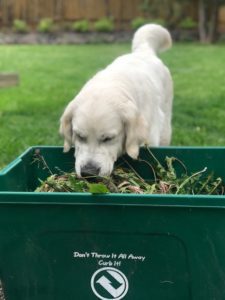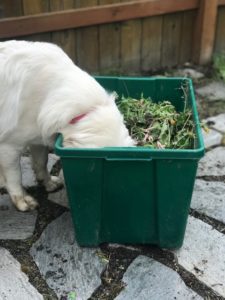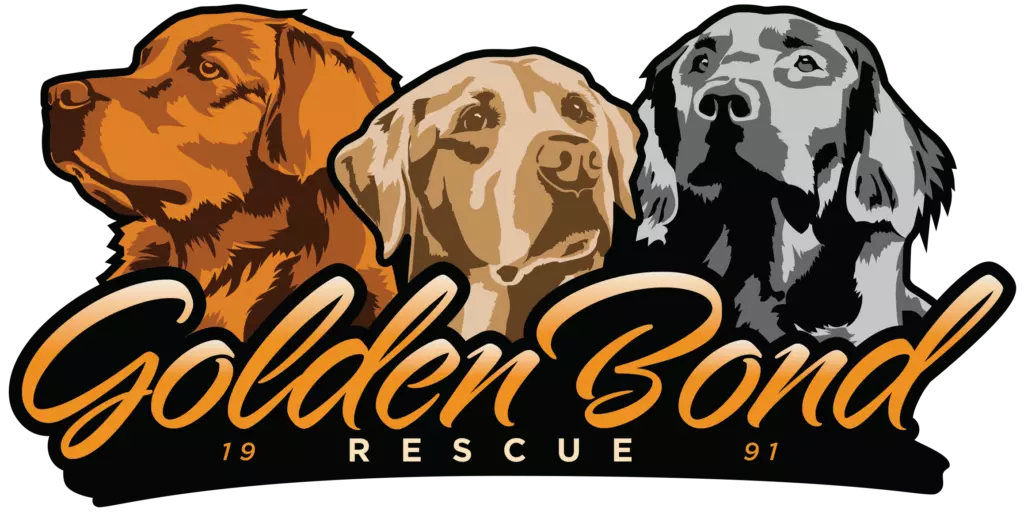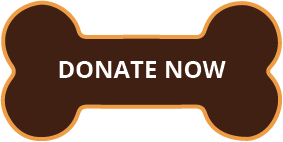How to have a Dog Friendly Yard
by Valorie Wiss
If I had seen this article 18 months ago, I would’ve felt smug. I had the perfect dog yard because I’d been trained by a glorious Golden named Tilli who ate everything she shouldn’t. Any garden veggies planted in my yard went into elevated pots and are non-toxic to dogs—just in case. I’d replaced all toxic decorative plants with blueberry bushes, lavender, Echinacea and roses. I’d even added a hedge of raspberry bushes (there’s a marvelous shrub variety) along a section of fence where a neighbor dog tried to tunnel through. I’d planted non-toxic trees, replaced moss with wooly thyme in my slate patio, and had a large expanse of grass for dogs to run. In addition, I always supervised my dogs in the yard. There was nothing I could learn because my yard was dog-perfect.

Luna was 4 months old when she took over my household. She’d been relinquished to GBR because of her skin condition, but she had a marvelous heritage and had been treated well. While she was shy with new people she was (and still is) extraordinarily confident and independent. (Are you seeing the proverbial writing on the wall, yet?)
She started with my 10-year-old lavender plants. Just chewing at first—she was a teething puppy, after all. But that graduated to ripping large lavender branches straight out of the ground. Fine. The plants were massive and non-toxic, though I increased the number of outdoor toys and encouraged her to play with them whenever she’d go for the lavender. Then she moved on to the wooly thyme in the slate patio. Not chewing. Ripping entire chunks straight out—roots and all. She’d dash around the yard with her prize, tossing it into the air and leaping after it gleefully. One by one she eliminated those patches of thyme, dashing over to steal another the moment my back was turned. I brought the dog pool out. I bought new outdoor toys and encouraged her to play tug-of-war with her “big brother,” Gibbs. She liked those things, but she liked plants better.
Next went the Echinacea patch. Gorgeous, specialty colored 6-year-old plants. Did she break the stems and eat the flowers? No, that would’ve given them a chance to grow back. She ripped each plant out of the ground and dashed to the middle of the yard to do her leaping celebration dance. Luna didn’t give a hoot about the word “no” and redirecting accomplished nothing. We dove into additional exercise and training. A tired dog is a good dog, after all.

The blueberry and raspberry bushes were next. First Luna ate all the blossoms off the branches (they did smell delightful), then she broke giant pieces of branches off the bushes. I put up fences around the berries and she turned her attention to the grass. At first it was digging. I filled in the holes. I did all of the normal behavior modifications. Eventually I found myself reaching for Tabasco. As it turns out, Luna LOVES Tabasco and began eating Tabasco-soaked dirt with reckless abandon. I was worried about my next step, but I was also desperate. So, I turned to putting extra-hot cayenne pepper in the holes. Thankfully, she didn’t even need to get close to the holes to smell that stuff. She stopped digging. Finally a win… until she discovered she could rip up big patches of turf with her giant maw.

This spring, I’ve changed my strategy and Luna and I have come to some agreements. First, the dog pool came out sooner and I dumped, moved, and refilled it every three days. This seemed to keep her interest and she LOVES splashing about in new locations—even if it is 3 feet from the last location. Second, working on the theory that Luna was mimicking me when I weeded, I used a different bin—one she could easily reach into. Every time she went for grass, I’d call her over and encourage her to grab dandelions from the weed bin. She’d do the same victory lap—tossing them in the air and leaping after them and then drop them to come back for more. (Note: any weeds that went into this bin were nontoxic). Sure, there were weeds strewn ALL OVER my lawn, but my grass was largely intact. Third, I re-seeded parts of my lawn and used shorter barrier fences (lined with tomato cages) so Luna could see what was going on in the off-limits area. She checked those areas every day. Fourth, I put up a squirrel feeder: high enough so the squirrels feel safe and low enough so Luna has something interesting to watch. And I began reading everything I could about having a nice yard and dogs.

- Make sure you use only non-toxic plants. The ASPCA seems to have the most accurate and comprehensive list.
- Be VERY intentional with your planting. Choose hardy plants that can take being stepped on repeatedly. If you must put fragile plants in your yard, then protect them with a barrier of hardier plants. Plant densely and start with more mature plants.
- Utilize temporary fencing around newly landscaped areas.
- Trees matter, too, so plant only non-toxic trees in your yard.
- If there’s an area you want your dog to stay out of, either put up low fencing or provide something irresistible (like berry plants) somewhere else in the yard. Or both. Fencing can even be driftwood, though in my yard, that wouldn’t pan out well…
- If you have a digger… provide an acceptable alternative digging area. This could be a sand box or just an area of the yard where it’s okay for your dog to dig. Train your dog to use this area by redirecting when s/he digs in the wrong spot. Bury fun chew toys in this area and praise your dog when they dig in the acceptable area.
- For those who have male dogs and are worried about urine spots in the grass: put a post somewhere in the yard and train your dog to use it. This could be a fencepost, a piece of driftwood, a small, sacrificial tree—anything that fits with the landscaping.
- Has your dog patrolled your fence so much that the grass is now a dirt path? Add a path made of brick pavers or mulch or gravel (make sure your dog doesn’t eat mulch or gravel, first!). A stone path with grass planted in between would look lovely and serve the same purpose. This also helps to cut down on muddy paws. If you don’t like the idea of seeing a doggy walk-way around the interior of your fence, plant a hedge of lavender or ornamental grasses between that path and your yard.
- Make sure to immediately clean up anything that could be toxic to your dog. This includes items such as spring mushrooms or leaves from toxic trees such as red maples. If your dog tends to be a “helper” do this when they are indoors.
- Provide fun outdoor toys for your dogs. Experiment with different toys until you find a few options your dog loves. Then rotate the toys so they don’t become boring.
- If your dog doesn’t like to play with regular toys outside, get creative with your enrichment.
Speaking of creative enrichment…. A couple weeks ago I hung an adjustable cloth hammock because I had a feeling Luna would find it delightful. Not only does she LOVE to join me in the hammock, she spends time trying to get into it by herself. When I’m not in it, I keep the hammock low to the ground so she won’t hurt herself. It is within site of the squirrel feeder and I have no doubt that, once she learns how, I’ll find her chilling in the hammock while gazing at those fascinating squirrels.
I have also started randomly playing a game I call “find-it” when the dogs come inside. For this game, I hide tiny bits of treats all over the house. When they come inside I tell them to “find it!” and they race around the house sniffing. Now, when I’m in the back yard and turn towards the house or the garage, Luna trots alongside me to see where I’m going, rather sinking her teeth into the grass.
Time spent throwing dandelions around the yard, playing with the hammock, gazing at squirrels and following me takes time away from yard destruction. I’m counting all of these as wins. It was a matter of acknowledging that Luna had very unique outdoor needs. We’ve still got a ways to go, and I’m certain she’ll have opinions, but Luna and I are headed towards a yard we both can enjoy safely and peacefully.
What landscaping ideas and outdoor toys have worked for you and your dog(s)? We’d love to hear from you!
Looking to adopt a Golden Retriever or Labrador Retriever? Contact us today!


